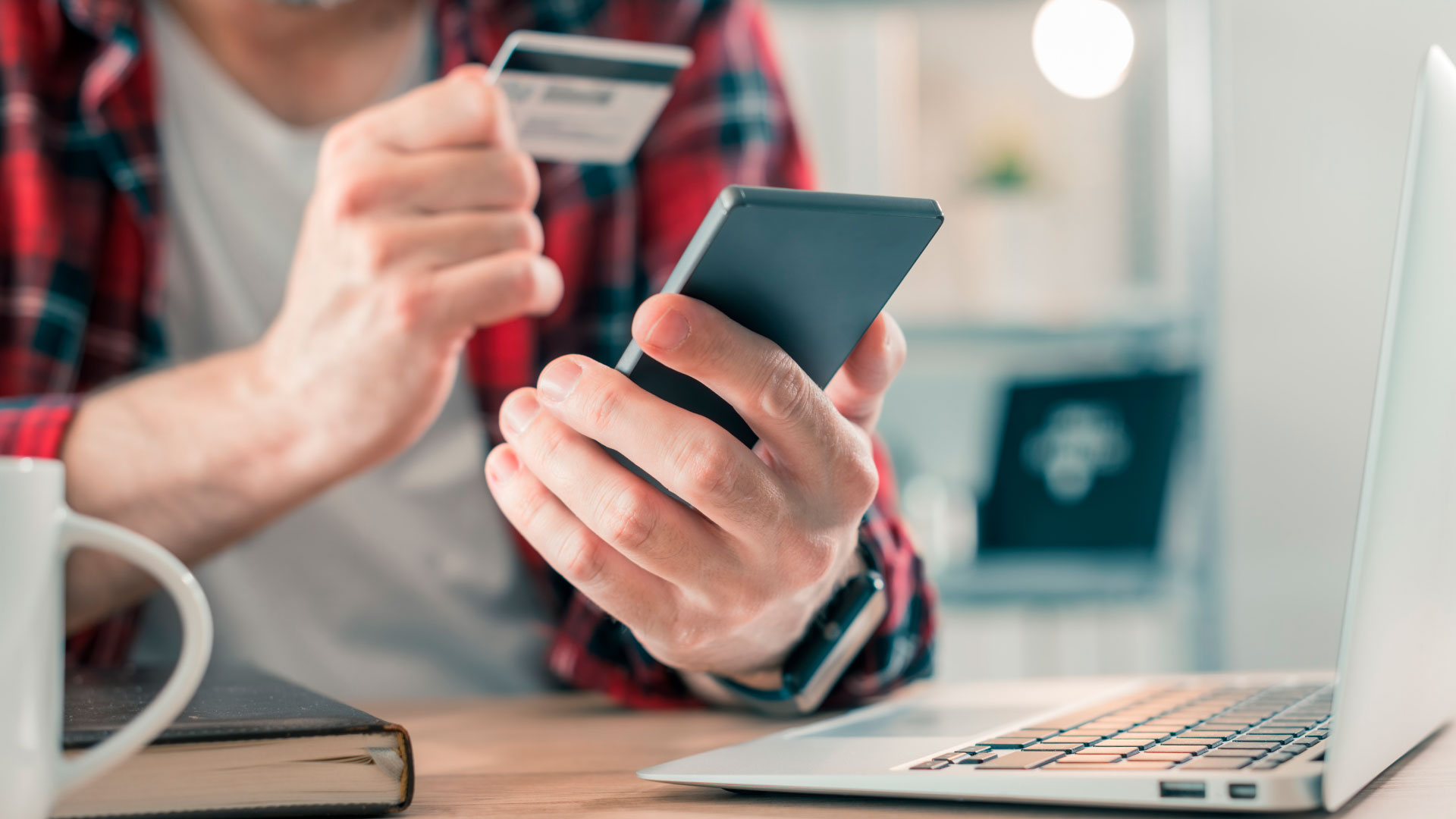Overview
Why do some mobile banking applications get high scores in all sorts of ratings and consumers’ love, while others are flooded with a storm of criticism and angry comments?
The answer lies on the surface: innovations and customer-centric approach.
According to a research from Citi, 80% of consumers with mobile banking applications that have at least 5 features are more likely to keep loyalty to their financial institution.
Every year J.D. Powers rates banking apps: Discover and Capital One are among top performers. Bank of America also gets high marks from J.D. Powers.
A survey by UserTesting ranks Bank of America above its competitors, JPMorgan Chase, and Wells Fargo. Bank of America customers note that using the bank’s app is much faster and easier than visiting a branch. Anyway, one thing customers don’t like in all three apps is how difficult it is to find and set up fraud alerts. Many said they couldn’t make this feature work, even if they found it.
Ron Secrist, head of online and mobile banking at Capital One claims:
“Offering innovations that customers are looking for—not just innovation for innovation’s sake.”
Which features will give you the most value? Usually, providers focus on mobile banking app features that are most likely to make the bank or credit union money.
There is nothing wrong with adding new features that serve traditional banking needs. But if your main aim is customer adoption and retention, try to address your app to “everyday needs” of the customer.
Harit Talwar, Head of Marcus by Goldman Sachs, says:
“70% of millennials would rather visit the dentist than their bank branch. To build trust, you have to have products and experiences which are on the side of the consumer.”
Here is the list of mobile banking features you can include in your banking app.
Mobile Banking App Features
1. Peer-to-Peer payment systems
Peer-to-Peer payments (or Person-to-Person payments, or P2P) is an online technology that allows a user to send funds personally from his bank account or credit card directly to another person.
According to Digital Payment Report by Jim Marous, the public’s embrace of mobile payment solutions is beginning to explode. The banking industry must adapt to new trends in mobile payments if it does not want to lose its tech-savvy customers.
While P2P payments have never been about turning a profit, it is still one of the strongest components of ongoing user engagement. The organizations increase investment in payment solutions to improve customer experience and try some new options, like P2P payments.
With the help of Peer-to-Peer payments, your customers may send or request money directly to each other with only an app. It’s almost an immediate process (meanwhile transferring the money to a bank account can take a couple of days) that gives the customer a kind of independence since he does not have to rely on a larger institution to make a money transfer.
PayPal dominated the market for more than a decade using this technology, but now more and more banks and credit card companies are willing to use person-to-person payments.
2. Voice payments
Voice banking is coming to the forefront as the Royal Bank of Canada and Barclays became the early adopters of this relatively new technology. Now the customers of these banks can ask Siri to pay their bills.
The new feature is now available within their mobile banking apps. Barclays also became the first UK bank to launch payments with the help of Apple voice assistant.
Even though voice payments have not yet received sufficient distribution, it will be the next banking channel to take off. A 2017 research by BI Intelligence states that the number of voice payment users will quadruple over the next five years to reach 31% of US adults – or 81 million consumers – by 2022.
The report also noted that 8% of US respondents used voice commands to buy something, send money to a friend, or pay a bill.
Relying on these data, we can safely say that the introduction of such a feature as voice payments will significantly expand your clients’ pool.
3. Budget & money planner
Today, the market is filled with applications that allow you to monitor your budget. So why not include this feature in your banking application?
Take care of your customers and give them insight into their spending habits. They will thank you later.
Give them better control over their financial health: include some tips on everyday spending. Such seemingly small things will help you increase brand loyalty.
4. Context-aware notifications
Imagine you are a chocolate pudding lover. Imagine you sit in your local restaurant and your banking app sends you a discount coupon for a dessert. And it’s nice if the payment is taken care of through a seamless integration with one’s banking app. You can also encourage customers to use their credit cards showing special offers when they are at a shop.
Let your customers feel like your app has been constructed to help them with their lives.
Ask yourself a question: “What do our customers need and what is their situation?”
Rizwan Khalfan, a chief digital officer at TD Bank, said:
“Say I’m going to watch a baseball game with my family. As I approach a ballpark, I get a notification from the TD Bank app with information about the game, stats, directions that guide me to my seat, and then, as we watch the game, I order food and drink and it’s paid for right through the app”.
The issue is that you should just walk the boundaries between banking interactions and customers living their lives.
5. Images recognition
When Mike Butler joined Radius Bank in 2008, he had two options: follow the standard development scheme, opening banking physical branches, or give preference to investing the bank’s resources in the mobile channel.
For him, the choice was obvious. In a few years, the number of physical branches of Radius Bank has reduced from six to one.
This radical approach of switching entirely to digital required a combination of cutting-edge technologies and user-friendly products since few people in 2008 could have assumed that today mobile banking will receive such a spread.
According to Chris Tremont, Virtual Banking EVP at Radius, the cornerstone of Radius strategy is to learn and understand what their customers want and then figuring out how to build and deliver it.
For example, they were among the first to implement an image recognition as their new mobile banking app feature.
The customer now does not need to visit a physical branch of the bank to open an account, he or she should just take a snap of a driver license and upload a picture to the banking app.
6. Advanced security
A survey by the Bureau of the Financial Institutions found that 75 banks and credit unions’ losses due to data security breaches reached a total of over $2.1 million US. The concern about security is highest among younger Millennials, according to Javelin, a research firm.
For example, HSBC decided to go beyond login and password in their mobile banking app in China and introduced facial recognition capabilities.
Their recent survey showed that nearly half of people interviewed in China believe facial recognition to be more secure, which represents 16 percent above the global average.
Another one new mobile banking app feature is a fingerprint scanner. Biometrics allow new customers to enroll in banking services through their smartphones and avoid a branch visit.
Such advantages of mobile banking are especially relevant for rural areas. ABN AMRO and RBS have already implemented this feature in their mobile banking applications.
Barclays, in its turn, launched a voice security system claiming that each voice is as unique as a fingerprint. Human voice consists of more than 100 unique physical characteristics based on the configuration of the speaker’s mouth and throat, which will significantly complicate the life of scammers. A person will be identified after only a few words are spoken.
7. Advanced geolocation
We all want to save our time, as this is often the most valuable resource. It’s unlikely that anyone will want to run around the streets in search of an ATM. So why not make life easier for your customers?
With this mobile banking app feature, your customers can look for bank ATMs and physical branches. They can also get actual information on available cash in the nearest ATMs and more details about opening hours of the nearest branches. And the built-in router will help them get walking or driving directions to the nearest offices.
Wrapup
Banks and credit unions often think about their mobile app purely through the lens of which features they have or may need. But today care and customer retention are at the forefront of the banking industry.
Your main goal is to increase your brand loyalty, so think not only about how to increase your profits but also how to help consumers manage their money more efficiently.
In any case, all of the above will not make sense, if your bank suffers from a poor customer service. Just check the App Store and Google Play reviews connected with your app.

